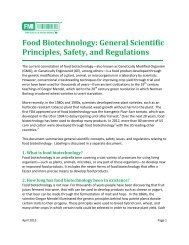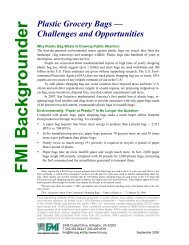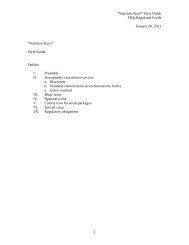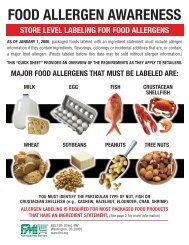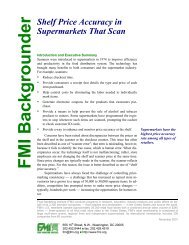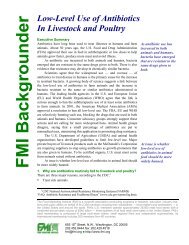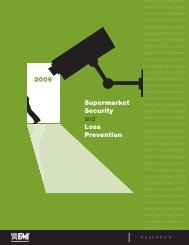Consumer Shopping Habits for Wellness and Environmentally ...
Consumer Shopping Habits for Wellness and Environmentally ...
Consumer Shopping Habits for Wellness and Environmentally ...
You also want an ePaper? Increase the reach of your titles
YUMPU automatically turns print PDFs into web optimized ePapers that Google loves.
Categories Vary in Their H+W Resonance<br />
Categories vary in their relevance to H+W. Gateway categories are the most immediately relevant<br />
to H+W. These categories, as ―gateway‖ suggests, are extremely important in opening further doors<br />
to more advanced levels of H+W, <strong>for</strong>ming both an ―entryway‖ <strong>and</strong> ―critical path‖ <strong>for</strong> the evolving<br />
consumer. For example:<br />
Supplements, as a broad category, often function as a gateway, as consumers move<br />
from using more common vitamins, to specialty supplements, to, <strong>for</strong> some, herbal <strong>and</strong><br />
other more exotic specialty supplements<br />
Use of incrementally natural (as compared to traditional or ―chemical‖) home cleaning<br />
products often leads to use of more natural <strong>and</strong> natural/organic specialty cleaning, <strong>and</strong><br />
at some point may help spark interest in other, ―less chemical‖ H+W products such as<br />
lotions <strong>and</strong> shampoos<br />
Certain categories have direct H+W relevance, but do not often serve as gateways. For instance,<br />
Oral Care products don‘t typically serve as gateways (in fact, we‘ve never heard of a consumer who<br />
began a H+W journey with an emphasis on ―a more naturally healthy mouth‖). However, they do<br />
serve as complements, in the sense that consumers that have been otherwise inspired toward H+W<br />
will adopt, say, natural toothpaste as part of a holistic emphasis on natural personal care.<br />
Finally, there are some categories that are neither gateways nor do they have clear ties to Health<br />
<strong>and</strong> <strong>Wellness</strong>. These categories will be more difficult (but not impossible) to cultivate in terms of<br />
H+W resonance, but are important <strong>for</strong> ―halo‖ purposes.<br />
Gateway Categories<br />
Figure 28 – Gateway <strong>and</strong> Non-Gateway Categories<br />
Non-Gateway Categories Non-Gateway Categories<br />
with Clear Ties to Health <strong>and</strong> Lacking Clear Ties to Health<br />
<strong>Wellness</strong><br />
<strong>and</strong> <strong>Wellness</strong><br />
Home Cleaning<br />
Books, Magazines, <strong>and</strong><br />
Education<br />
Functional Beverages<br />
Supplements<br />
Children‘s Hygiene & Toiletries<br />
Hair <strong>and</strong> Skin Care<br />
Plant <strong>and</strong> Garden Care<br />
OTC<br />
Oral Care<br />
Eye Care<br />
Feminine Hygiene<br />
Makeup & Cosmetics<br />
Pet Supplies<br />
Home Lighting<br />
Office Supplies<br />
Sporting Equipment<br />
Toys <strong>and</strong> Games<br />
It is also worthy to note that several categories residing in the Periphery of the H+W world, including<br />
OTC, sporting equipment, <strong>and</strong> even some home goods categories such as lighting, are more<br />
‗residual‘ than actually part of a dynamic product pathway. For the most part, they are ―always there‖<br />
<strong>for</strong> every consumer <strong>and</strong>/or exist in the Periphery outside of any meaningful commitment to a H+W<br />
53




